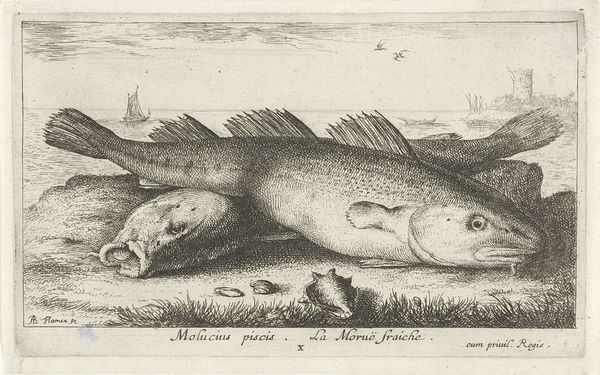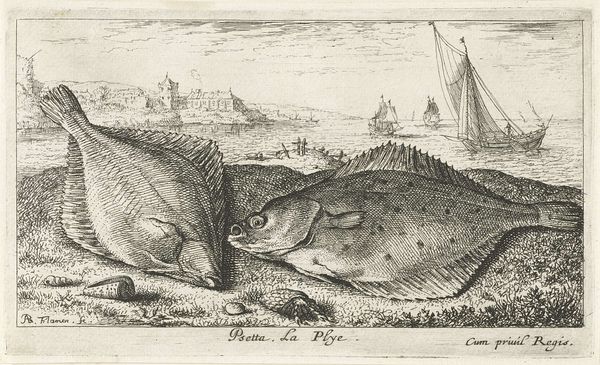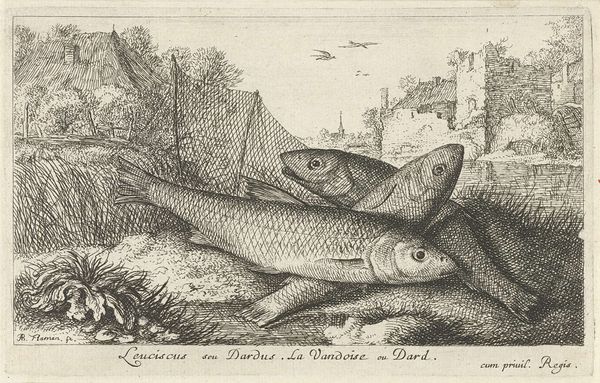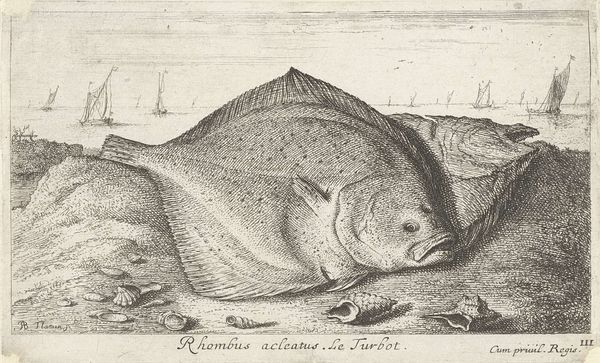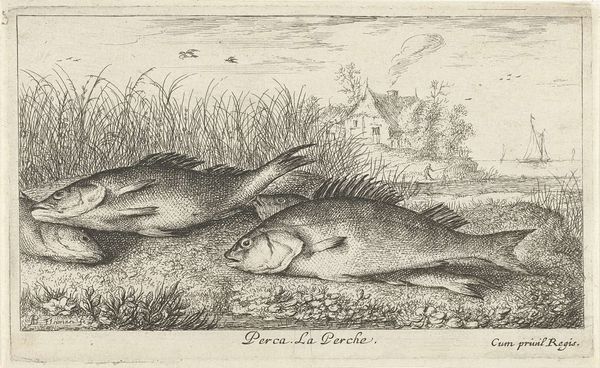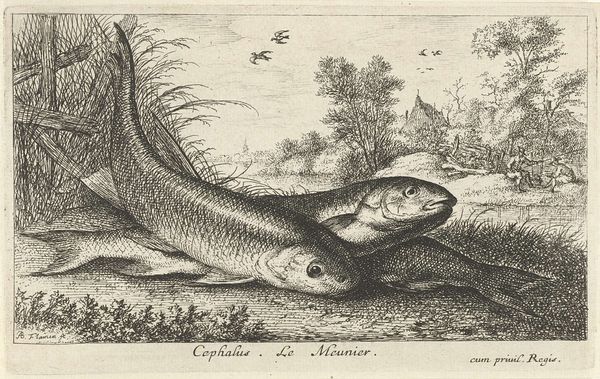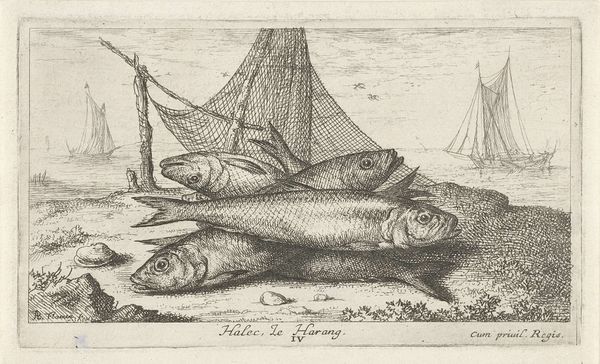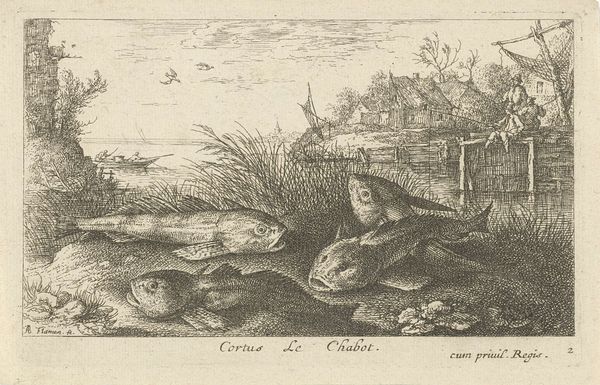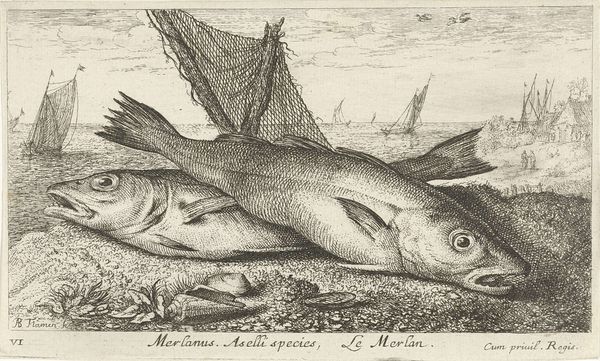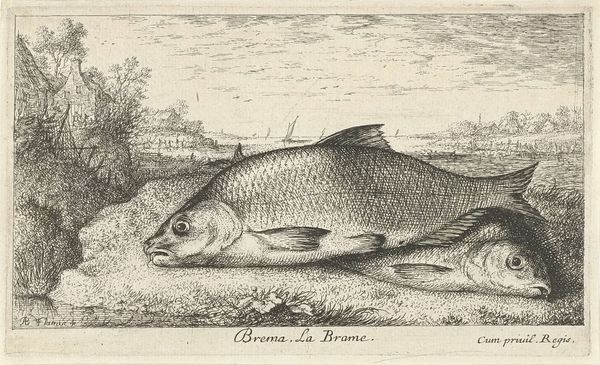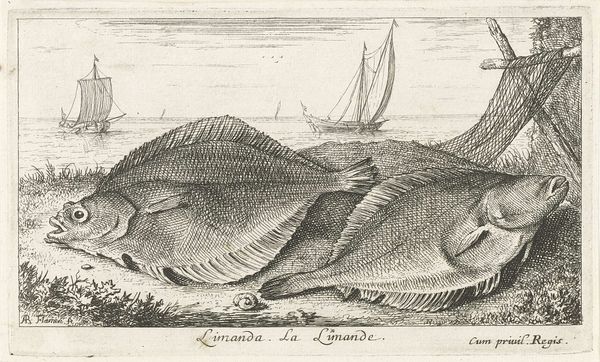
print, etching, engraving
#
dutch-golden-age
# print
#
etching
#
engraving
Dimensions: height 104 mm, width 170 mm
Copyright: Rijks Museum: Open Domain
Albert Flamen created this etching, titled "Four Tench on a Riverbank," capturing a still life of fish against a serene waterside backdrop. The fish, specifically tench, are not merely objects of observation here; consider how aquatic life has long been a potent symbol. In early Christian iconography, the fish represented Christ, a visual cipher used by believers in times of persecution. Elsewhere, in more ancient traditions, fish are emblems of fertility and abundance, their scales echoing the myriad blessings of the natural world. Note how Flamen has arranged these tench, their bodies overlapping, their eyes seemingly lifeless. This echoes the vanitas tradition, where such depictions prompt contemplation on mortality and the transient nature of life. The image calls to mind a primal confrontation with death, a stark reminder of our own ephemeral existence. It’s a motif that resurfaces throughout art history, each time imbued with the ever-evolving anxieties and philosophical musings of its age. As we journey through time, we see how symbols persist, morph, and re-emerge. This cyclical progression reflects our ongoing dialogue with fundamental aspects of human existence.
Comments
No comments
Be the first to comment and join the conversation on the ultimate creative platform.
